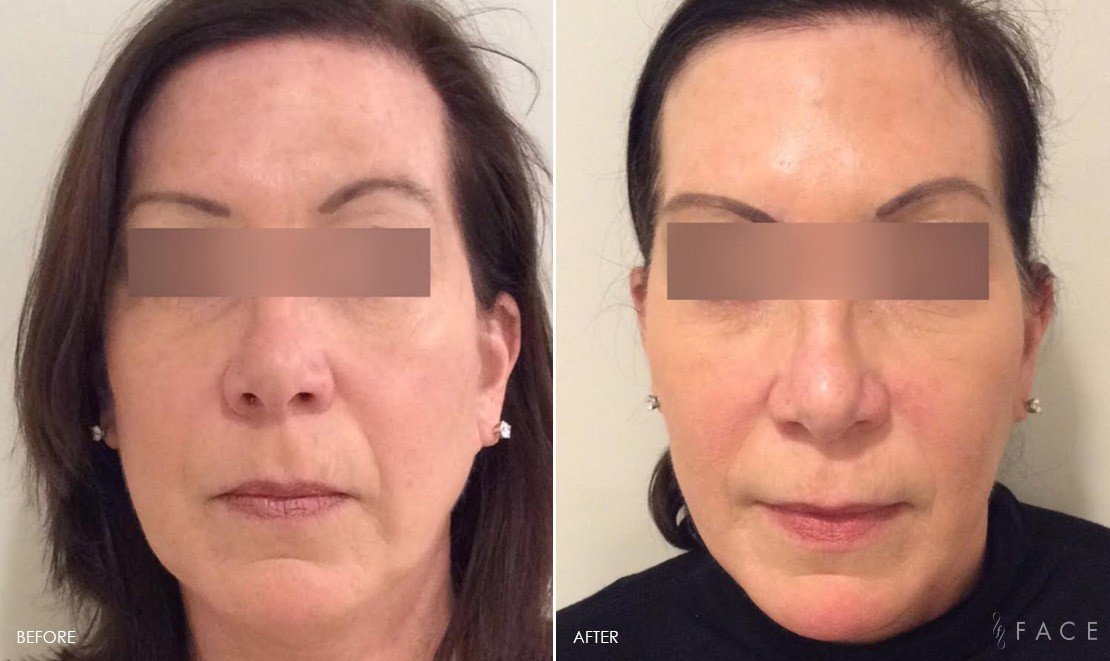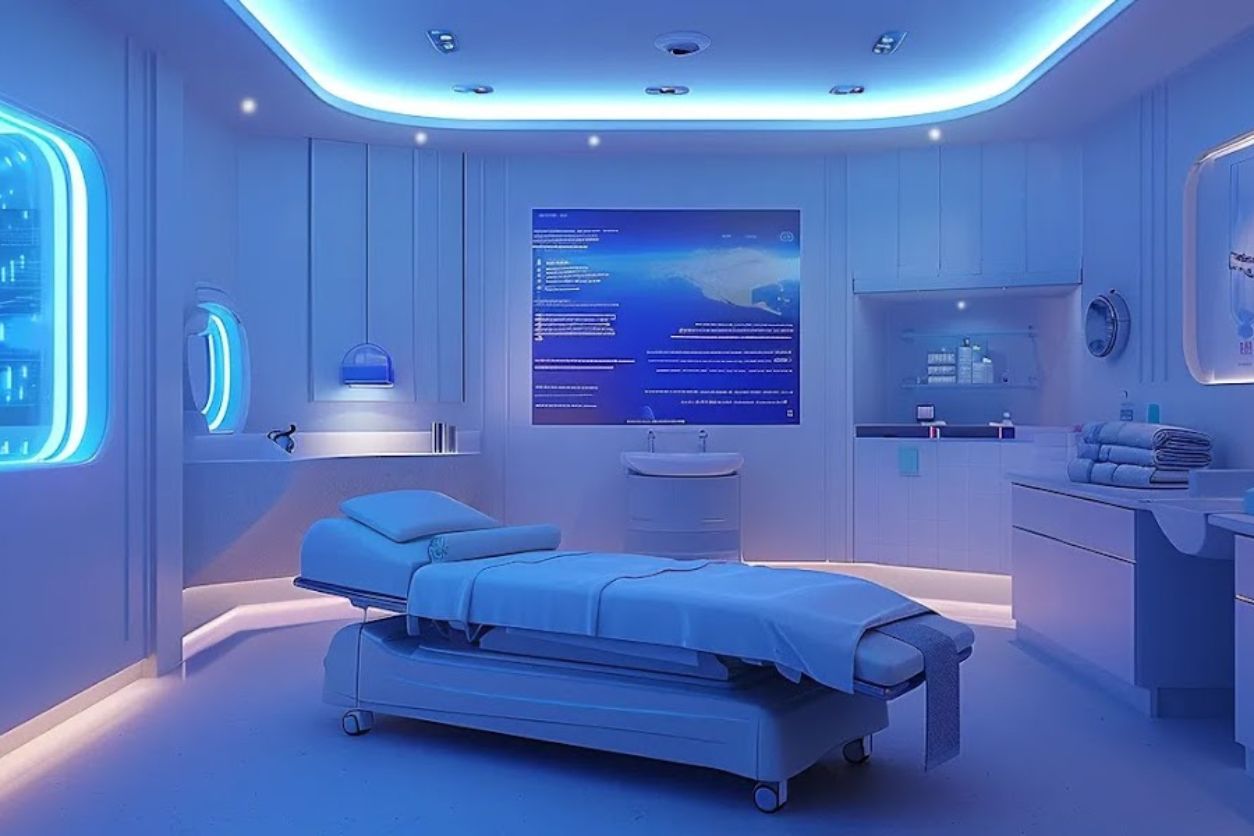5. Chin
Muscles in the chin can cause the skin to bunch and wrinkle, leading to an “orange peel” appearance. Calming the activity of these muscles keeps them from contracting the chin area and prevents the skin from being pulled into these wrinkles.
6. Upper Lip
For some people, a thin upper lip or one that raises to expose too much of the upper teeth and gums can be a source of self-consciousness. Treatment can create a “lip flip” for fullness, as well as prevent the upper lip from moving as much for those with a “gummy smile”, allowing you to speak and smile normally without overexposure of the gum line.
7. Jawline and neck
With so many muscles in the neck and skin so thin, neck lines can appear over time. By treating areas of the neck and jawline where overly active or tight muscles distort the skin, the appearance of wrinkles and fibrous bands can be reduced.
8. Excessive Sweating
Hyperhidrosis is a condition that causes people to sweat excessively. Typically, this is not related to heat or exercise and can occur at any time. Sweating can be severe and may soak through your clothes. Botox® can be used to treat this issue and help patients avoid embarrassment. That said, at FACE we prefer the permanent nature of MiraDry treatments.
9. Migraines
In July 2010, Botox® was licensed for use on patients suffering from chronic migraines. If you constantly find yourself suffering from debilitating migraines Botox® could provide you with the relief you need.
10. TMJ
TMJ (temporomandibular jaw disorder) is a condition that causes people to feel a significant level of discomfort in their jaw. Botox® treatment can provide patients with significant levels of relief.
Am I a Candidate for Botox®?
Botox® may be the solution you’ve been looking for. Many people begin using Botox® in their twenties to stop wrinkles from developing, rather than turning back the clock once they begin to show. One of our Nurse Injectors at FACE will discuss how Botox® could help you and what medical conditions it might be suitable for that you are experiencing.
Who Should Avoid Botox
Allergies and Sensitivities
Individuals with a known allergy to any Botox ingredient or those who have had an allergic reaction to botulinum toxin injections should avoid this treatment. Allergic reactions can lead to serious complications, so it’s important to discuss your medical history with a healthcare provider before considering Botox.
Certain Medical Conditions
People with specific medical conditions, such as neuromuscular disorders (like myasthenia gravis or Lambert-Eaton syndrome), should not use Botox. These conditions can increase the risk of severe side effects, such as muscle weakness and difficulty swallowing.
Pregnancy and Breastfeeding
Botox is not recommended for women who are pregnant or breastfeeding. While there is no conclusive evidence that Botox is harmful to an unborn child, the risk of complications is enough that physicians advise against it during these periods.
Data Point: Approximately 3% of individuals considering Botox may have conditions that make them ineligible for the treatment, underscoring the importance of a thorough medical consultation.
Pre- and Post-Treatment Expectations
Before Treatment
Before receiving Botox injections, it’s crucial to prepare properly. Patients should avoid alcohol for at least 24 hours before the procedure to reduce the risk of bruising. Additionally, certain medications like blood thinners should be paused a few days prior, but always consult with your healthcare provider before stopping any medication.
During Treatment
The Botox procedure is quick and relatively painless. A fine needle is used to inject small amounts of botulinum toxin into specific muscles. The entire process typically takes less than 30 minutes, and most patients report only a mild sting at the injection site.
After Treatment
Post-treatment care is simple but important. Avoid rubbing or massaging the treated areas for at least 24 hours to prevent the toxin from spreading to unintended areas. It’s also recommended to stay upright for 2 to 4 hours after the procedure and avoid strenuous activities for the rest of the day.
Data Point: Over 80% of Botox patients return to their regular activities immediately after the procedure, reflecting its convenience and minimal downtime.
Risks and Side Effects
Common Side Effects
After a Botox injection, some patients may experience mild side effects such as pain, swelling, or bruising at the injection site. These effects typically resolve within a few days. Headaches and flu-like symptoms can also occur but are usually short-lived.
Less Common Risks
In rare cases, Botox can cause more serious side effects. These include drooping eyelids, crooked eyebrows, or a crooked smile if the toxin spreads to nearby muscles. Some patients might also experience dry eyes or excessive tearing.
Severe Reactions
Though extremely rare, severe reactions can occur. These include muscle weakness, difficulty swallowing, or breathing problems. If any of these symptoms appear, immediate medical attention is required. Patients should also watch for signs of an allergic reaction, such as rash, itching, or shortness of breath.
Data Point: Severe side effects from Botox are rare, occurring in less than 1% of treatments, but it’s crucial to be aware of them.
Combination Treatments
Dermal Fillers and Botox
Botox can be combined with dermal fillers like Restylane or Juvederm for enhanced results. While Botox relaxes the muscles that cause wrinkles, fillers add volume to areas like the cheeks, lips, or under the eyes. This combination can create a more youthful and fuller appearance, addressing multiple signs of aging at once.
Laser Treatments and Botox
Laser treatments, such as laser hair removal or skin resurfacing, can be performed alongside Botox. Lasers target the skin’s surface, improving texture and reducing pigmentation, while Botox works below the surface to relax muscles. Together, they provide a comprehensive skin rejuvenation approach.
Micro-needling and Botox
Micro-needling stimulates collagen production by creating tiny punctures in the skin. When paired with Botox, this treatment enhances skin firmness and smoothness. Micro-needling focuses on improving the skin’s texture, while Botox prevents the muscle movements that cause wrinkles.
Data Point: Combining Botox with other cosmetic procedures can boost overall results, with about 30% of patients opting for multiple treatments in a single session.
Success Stories and Patient Testimonials
Patient Testimonials
Many patients have shared their positive experiences with Botox treatments. For example, Sarah, a 35-year-old mother of two, noticed significant improvements in her forehead lines just days after her first session. “The results were subtle but made a big difference. I feel more confident and refreshed,” she says.
Success Stories
Another patient, Mike, who struggled with chronic migraines for years, found relief through regular Botox injections. “Before Botox, I had migraines almost every week. Now, they’re much less frequent, and the intensity has decreased,” Mike reports. His experience highlights the dual cosmetic and medical benefits of Botox.
Real Results
These testimonials are backed by real results. Studies show that over 90% of patients are satisfied with their Botox treatments, whether for cosmetic enhancement or medical relief. Sharing these success stories can help potential patients feel more comfortable and informed about their options.
Data Point: Botox boasts a high patient satisfaction rate, with over 90% of users reporting positive results after treatment.
Differences Between Botox and Other Similar Treatments
Botox vs. Dysport
Botox and Dysport are both derived from botulinum toxin, but they differ in concentration and molecule size. Dysport spreads more easily, which can be beneficial for treating larger areas like the forehead. However, Botox is often preferred for precise targeting of smaller areas, such as crow’s feet.
Botox vs. Xeomin
Xeomin, like Botox, is used to treat wrinkles and fine lines, but it has no additives. This makes it a “naked” version of botulinum toxin. Some patients prefer Xeomin to avoid the development of antibodies that could make treatments less effective over time. However, Botox remains the most widely used and studied, offering a long track record of safety and efficacy.
Botox vs. Jeuveau
Jeuveau is a newer player in the market, often called “Newtox.” It is similar to Botox in its action and results but is marketed at a slightly lower cost, appealing to younger patients or those new to aesthetic treatments. While both are effective, Jeuveau is gaining popularity among patients seeking affordable options.
Data Point: Botox remains the most popular botulinum toxin brand, with a market share of over 70%, despite the availability of alternatives like Dysport, Xeomin, and Jeuveau.
Frequently Asked Questions (FAQs)
How long do the effects of Botox last?
Botox effects typically last between 3 to 4 months. Over time, the treated muscles gradually regain movement, and wrinkles may reappear. Regular follow-up treatments are recommended to maintain the desired results.
Is Botox painful?
Most patients report minimal discomfort during Botox injections. The needles used are very fine, and the procedure is quick, often completed in less than 30 minutes. Some describe the sensation as a small pinch or sting.
What should I avoid after getting Botox?
After receiving Botox, it’s important to avoid rubbing or massaging the treated areas for at least 24 hours. You should also stay upright for 2 to 4 hours after the procedure to prevent the toxin from spreading. Strenuous physical activity should be avoided on the day of the treatment.
Can I combine Botox with other treatments?
Yes, Botox can be safely combined with other cosmetic treatments like dermal fillers, laser therapy, or micro-needling. These combinations can enhance overall results and address multiple skin concerns at once.
What are the risks associated with Botox?
While Botox is generally safe, some risks include minor side effects like bruising, swelling, or headaches. Rarely, more serious complications such as drooping eyelids or muscle weakness can occur. It’s important to consult with a qualified healthcare provider to minimize these risks.
Data Point: Around 90% of Botox patients report satisfaction with their treatments, with many continuing to receive injections regularly.








